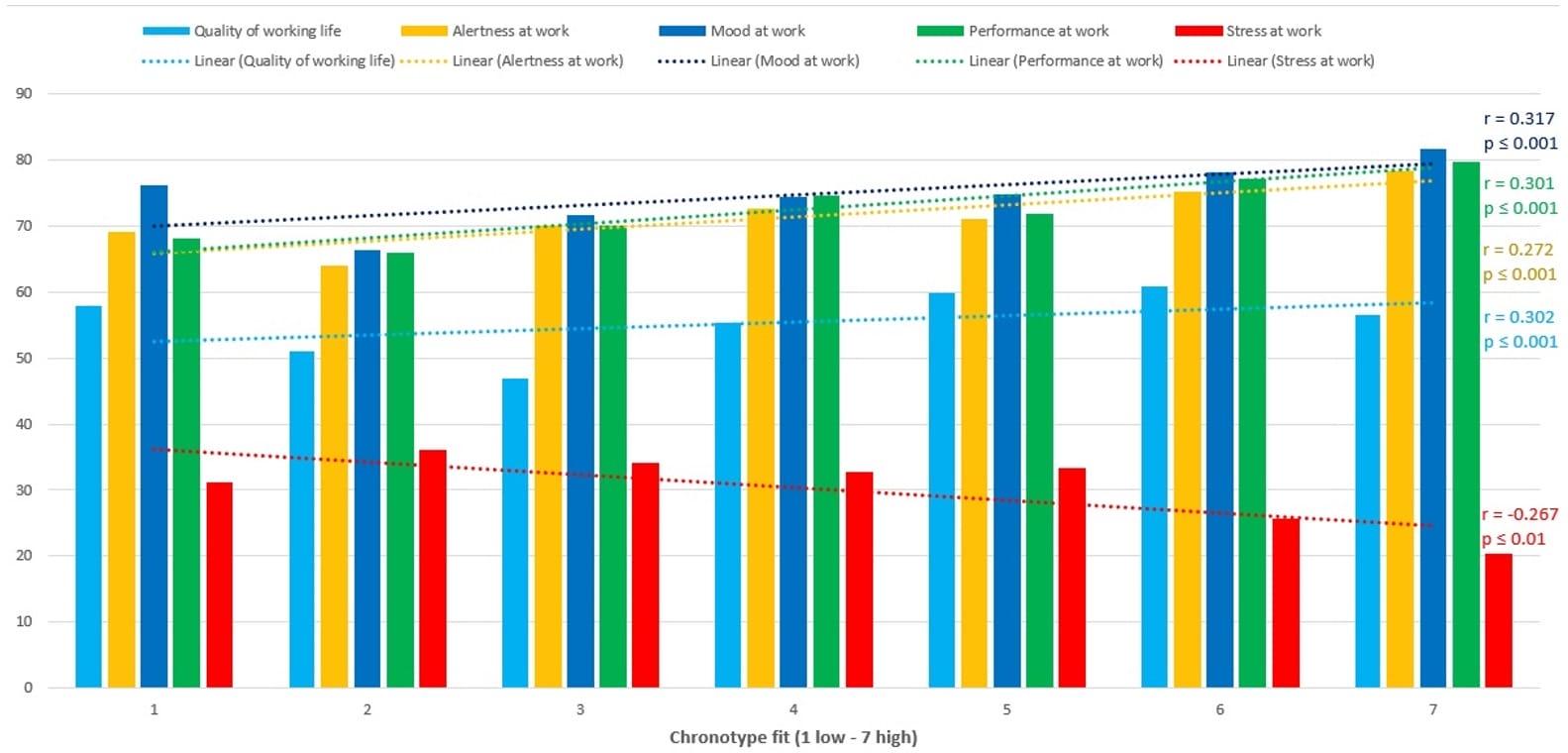Why and how to take energy levels into account at work? – Results from the international CARVE project

Genetically the circadian rhythm is mainly affected by the diurnal changes of light and dark, and the “central clock” in the brain, which affect the production of two important hormones in the body: melatonin (making you feel sleepy) and cortisol (making you energetic) (Figure 1). These diurnal cycles can also be observed in the daily emotions (Figure 2).
Since people differ in how their hormones and emotions fluctuate daily, they can be divided into three chronotypes:
- Early birds, who produce cortisol much earlier in the day and thus wake up earlier and have their energy peak in the morning;
- Hummingbirds, whose cortisol decreases in the afternoon, so that they may experience an afternoon energy dip;
- Night owls, who produce melatonin much later, and hence are often active much later and have difficulty getting up in the morning.
You can test your own chronotype with a questionnaire here: https://chronotype-self-test.info/
What is chronocrafting and why to do it?

Being aware of these chronotypes, along with the energy peaks and dips, can be very helpful in efficiently scheduling working tasks and making the best use of an individual’s energy. This is called ‘chronocrafting’. Work can be done during both peaks and dips, but the activity itself can differ (Figure 3).
- During the energy peaks – detailed work, activities with high workloads and physical work can be done better.
- During the energy dips – creative, social and routine work is recommended, as they are re-energising activities.
Different aspects of energy at work are related to positive outcomes both at and outside of work. People who are chronocrafting, are found to be more productive and creative at work. They also feel happiness, and experience flow and more control about their daily tasks. Additionally, according to studies, chronocrafting reduces stress and fatigue in people.

In the CARVE project’s Finnish measurements the chronotype fit to work schedules was significantly correlated to subjective alertness, mood, performance and stress at work, and to overall quality of working life (Figure 4). Also, the quality of working life was significantly correlated to chronocrafting, and performance, alertness and mood at work (Figure 5). So, you can improve your work well-being with living by your own chronotype and taking your energy levels into account when scheduling working tasks.
The CARVE HR manual – A way to work on energy at work in your organization

Therefore, it would be very important to “make work of energy at work”. This is a shared responsibility of both employees and employers. In an international CARVE project between Finland, Belgium, and Bulgaria, we developed a Practical Guide (CARVE HR manual) to make a start as an organisation to collaboratively work on an energizing workplace.
This HR manual can be used by those actors that are involved in setting up the organisation’s well-being policy such as HR-staff of prevention advisors. The guide consists of two main parts. The first part of the guide lays out the route with different stops. At each stop, tips, advice and templates are given on how to achieve each of the actions described (Figure 6).

The second part of the guide consists of evidence-based insights and tips on how to work on each of the following types of energy: physical energy (e.g. health), mental energy (e.g. concentration), emotional energy (e.g. connectedness) and spiritual energy (e.g. values and goals) (main picture). Although the different forms of energy are discussed separately, they do not work separately, but affect each other. As an organisation, you may start with the type of energy that best fits the organization’s and its employees’ needs, but it is important not to lose sight of the other types.
The CARVE E-learnings – An interactive and scalable way for promoting energy at work
A part of the project’s success story is the platform www.actauni.com, developed jointly by the project partners. ActaUni aims to accumulate knowledge about how we manage personal energy at the individual and organizational levels so that employees are more motivated and efficient, healthier and happier, and companies are more competitive and profitable.

ActaUni offers trainings at individual and team levels on circadian energy and chronotype, work energy and job crafting, as well as on physiological energy and sleep. The total 7 pieces of trainings were developed as e-learning courses available in 3 languages – English, Flemish, and Bulgarian. At this stage, the platform does not require registration to access the training content, so it is very easily accessible.
Through the platforms the managers and HR professionals can use online or download the Practical Guide ”How to Work on Energy at Work” (https://actauni.com/hr/), which was mentioned in the previous section. The document is organized on a modular basis and each organization can, according to its needs, start from a certain stage of the process and ”assemble” its own Guide and methodology.
In addition, ActaUni offers a space where one can share knowledge and experience, become a trainer and publish own courses. The step-by-step guide helps to do this with minimum effort, and the team of our partner Idein, who led the development of the platform, is always available for support.




